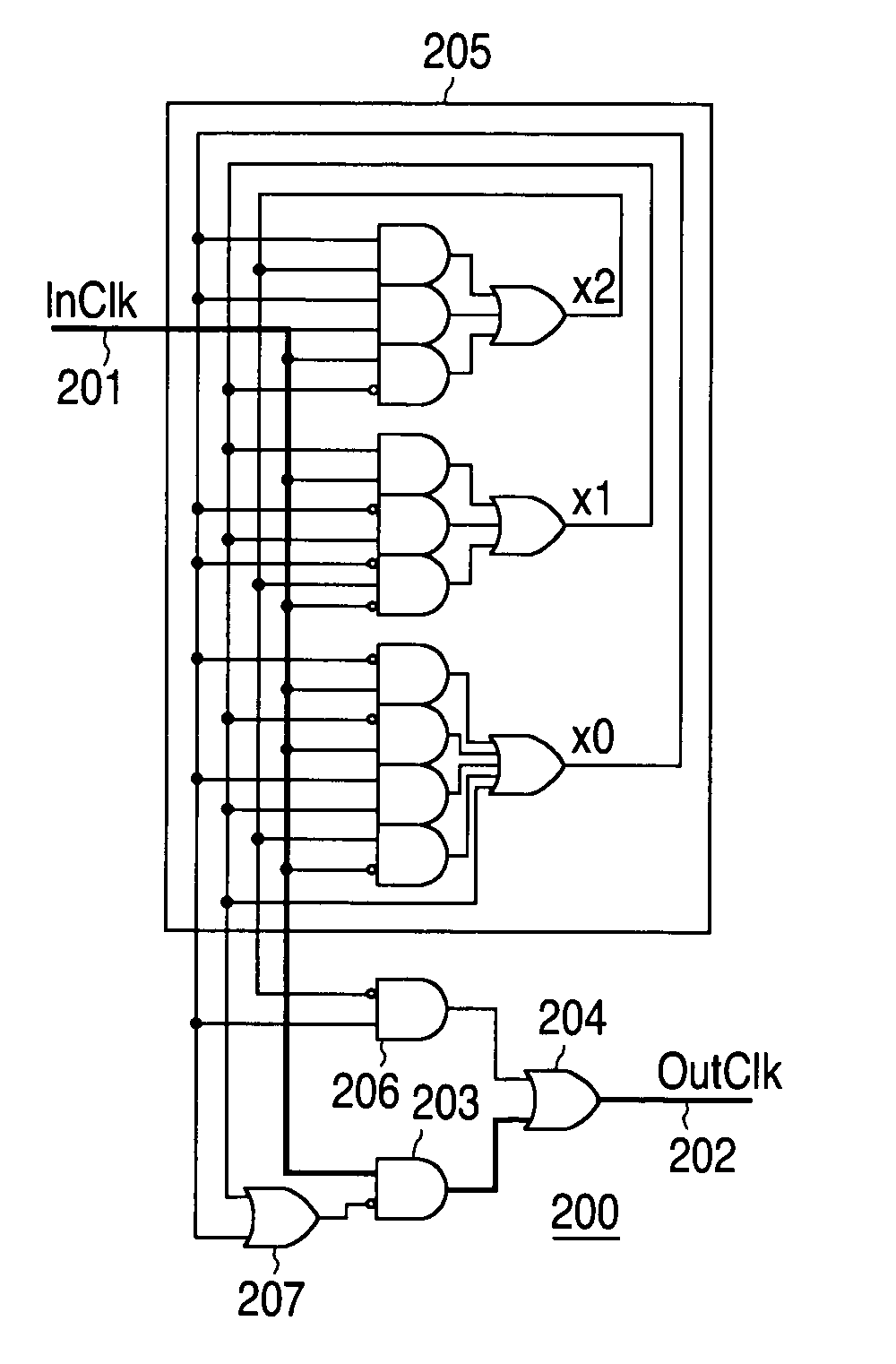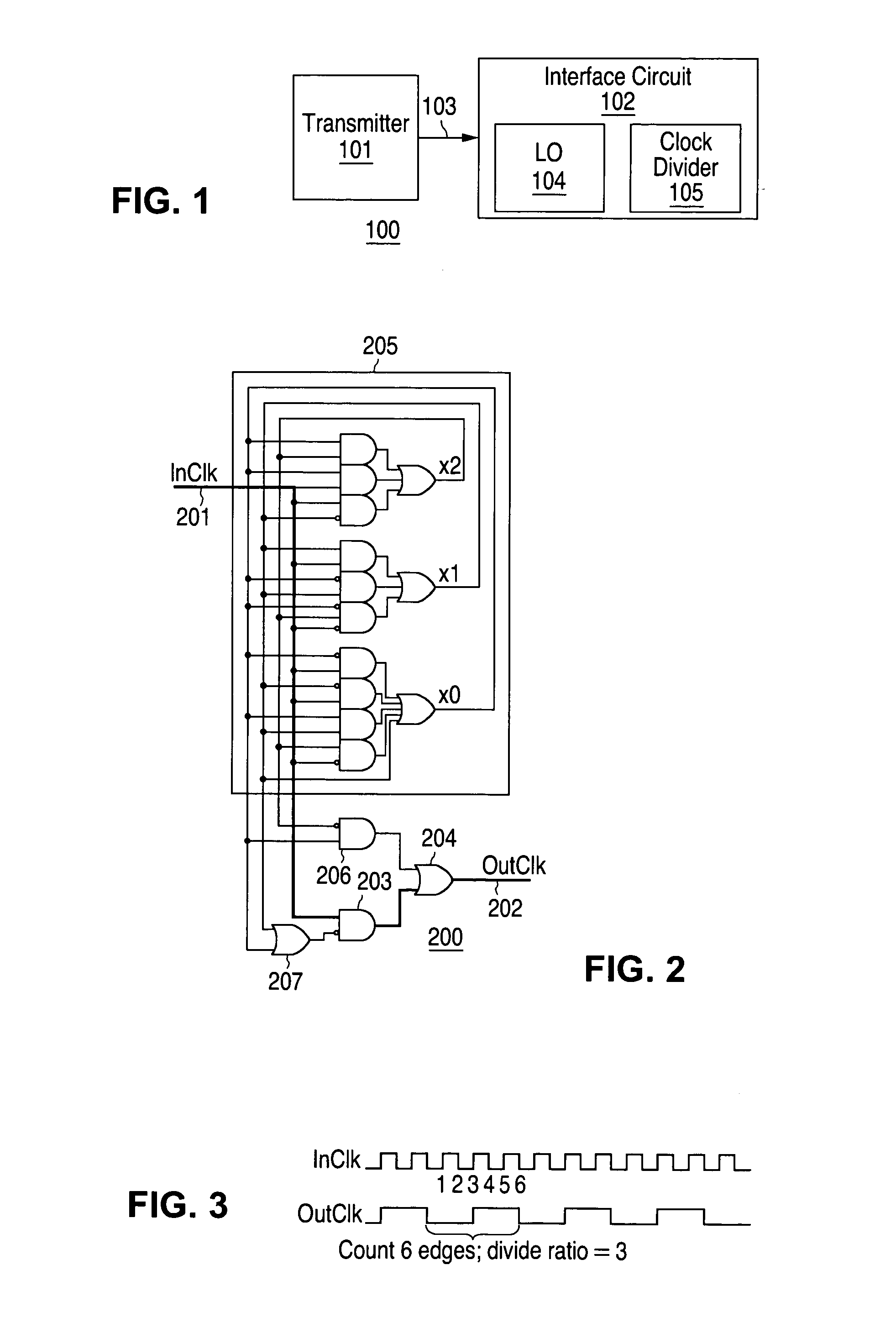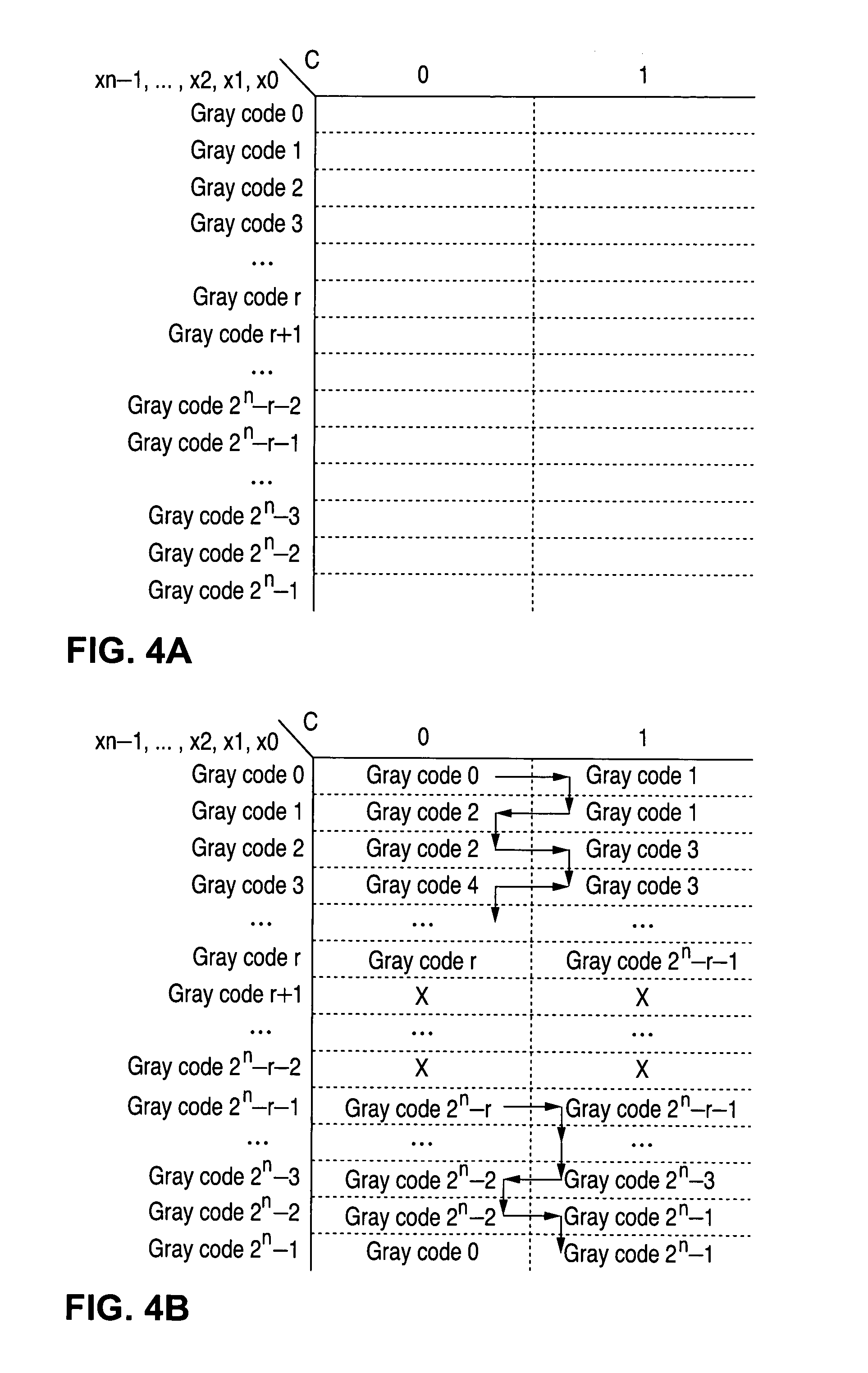Minimum gate delay edge counter
a gate delay and edge counter technology, applied in the field of edge counters, can solve the problem of not being able to achieve a 50/50 duty cycle outpu
- Summary
- Abstract
- Description
- Claims
- Application Information
AI Technical Summary
Benefits of technology
Problems solved by technology
Method used
Image
Examples
Embodiment Construction
[0011]To address the above-discussed deficiencies of the prior art, it is a primary object of the present invention to provide, for use in a wireless receiver for a wireless communications system, an edge counter counting both rising and falling edges of an input signal, implemented with combinational logic only and without flip-flops. The combinational logic is designed using intermediate signals and state transitions producing an output signal having a cycle corresponding to a predetermined odd or even number of input signal edges, with the logic optimized and protected against entry into “stuck” states. A low power, low gate count edge counter is thus implemented with an output signal duty cycle at least as balanced as the input counter duty cycle.
[0012]The foregoing has outlined rather broadly the features and technical advantages of the present invention so that those skilled in the art may better understand the detailed description of the invention that follows. Additional fea...
PUM
 Login to View More
Login to View More Abstract
Description
Claims
Application Information
 Login to View More
Login to View More - R&D
- Intellectual Property
- Life Sciences
- Materials
- Tech Scout
- Unparalleled Data Quality
- Higher Quality Content
- 60% Fewer Hallucinations
Browse by: Latest US Patents, China's latest patents, Technical Efficacy Thesaurus, Application Domain, Technology Topic, Popular Technical Reports.
© 2025 PatSnap. All rights reserved.Legal|Privacy policy|Modern Slavery Act Transparency Statement|Sitemap|About US| Contact US: help@patsnap.com



